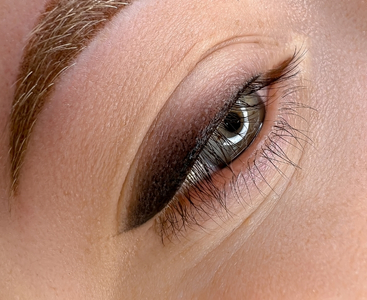MANDIBULAR ADVANCEMENT / SET BACK
Mandibular Advancement / Set back
Mandible advancement and set back covers the procedures applied to eliminate the incompatibility between the jaw bones. The lower jawbone, also called the mandible, may be behind or ahead of it for different reasons. In patients with this condition, orthognathic surgery should be applied for both the aesthetic appearance of the face and the elimination of physical discomfort. Orthognathic surgery, also known as jaw and facial bone aesthetics, ensures that the bones and soft tissues are brought into the proper shape. Removal of structural defects in both the lower and upper jaws is included in this field.
What is Mandible?
The medical name for the lower jawbone is the mandible. The mandible, the largest bone in the facial skeletal system, has a movable joint. It has an articular disc similar to that of the vertebrae and is connected to the temporal bone. It has two important parts called ramus and corpus.
- Ramus: It is the part where the muscles that provide the chewing function are located. It forms the joint between the jawbone and the temporal bone.
- Corpus: This area, also called the body, is the part where the lower teeth are located.
How is the Aesthetic Evaluation of the Mandible Made?
Being forward or backward of the mandible can cause both aesthetic and functional problems. While evaluating the lower jawbone from an aesthetic point of view, some measurements are used. These:
- Gonial Angle: This angle gives information about the relationship between the ramus of the mandible and its trunk. It refers to the angle between the posterior border of the ramus and the lower margin of the mandible. 124 ° ± 6 ° in men; for women, 122° ± 4° is considered normal. In cases where the mandible grows posteriorly, this angle also widens. The narrowing of the angle means that the lower jaw bone grows forward.
- Lower Mandible Border: The border between the face and neck is the lower border of the mandible. Evaluation is made as a result of manual inspection and visual inspection. Both bones and soft tissues are among the factors affecting the lower border of the mandible.
- Mandible Body Length: The body length of the lower jawbone is above or below normal values, which is important for the decision of surgery.
- Relationship between mandible ramus and trunk
What is Mandible Advancement / Retraction?
Deformations and deformities in the jaw bones are handled within the scope of orthognathic surgery. These procedures, which are a field of specialization of plastic surgery, include forward and backward removal of the jaw bones. The lower jaw bone, also known as the mandible, may not have a proper structure due to developmental disorders and traumas. While this creates a mismatch between the lower jaw and the upper jaw, it also creates an aesthetically undesirable appearance. With the mandible advancement / set back treatment, the jaw bones of the patients are harmonized with each other and with the general structure of the face.
If the mandible is posterior to the upper jaw, it is called micrognatism. If the mandible is anterior to the upper jaw, it is called prognathism. This may cause patients to have difficulty in actions such as chewing, speaking, breathing. At the same time, it can prevent the face from looking structurally smooth in terms of aesthetics. For this reason, it may be necessary to apply mandibular advancement / set back treatment to eliminate all these problems.
What is Orthognathic Surgery?
Mandible advancement and retraction are procedures performed within the scope of orthognathic surgery. Surgical interventions on the skeletal system of the jaw and face are called orthognathic surgery.
Before orthognathic surgical procedures, patients undergo a very detailed examination. In this way, it is possible to create a comprehensive treatment plan. The treatment process has an interdisciplinary nature. While plastic surgeons provide treatment in the field of orthognathic surgery, orthodontists are assisted to align the teeth.
What are the Symptoms of Lower Jaw Forward / Backward?
Incorrect alignment of the lower and upper jaw causes many symptoms in patients. Main symptoms and complaints:
- Aesthetic problems that arise due to the absence of the jaw bones in the area where they should be
- Psychological problems caused by aesthetic problems
- Occlusion (bite) disorders
- difficulty eating
- Difficulty in breathing
- It can appear as sleep problems.
How is Mandible Advancement / Retraction Is Done?
Orthognathic surgical procedures are interventions that need to be planned very carefully. For this reason, patients undergo a detailed examination before the operation. Within the scope of this inspection:
- Panoramic, cephalometric and jaw joint views of both the lower and upper jaws are performed
- Detailed examination is carried out by making a plaster model of the chin.
- Photocephalometric analysis is performed to reveal the expected change in the patient’s profile.
- After all the problems in the jaw structure are determined, orthodontist guidance is made when necessary, and braces are applied to align the teeth.
During mandibular surgery, patients are kept under general anesthesia. The operation is performed in a full-fledged hospital and in sterile operating room conditions. Before and after surgery, patients may need to undergo orthodontic treatment for a certain period of time. In this way, deformities in the teeth are eliminated.
- In patients where the lower jaw is back from normal; During the operation, the jawbone is cut and moved forward. Bone tissue transplantation is performed into the cavity formed in the cut area. The jaw is fixed with titanium plates and screws.
- In patients with lower jaw more than normal; During the operation, the bone tissue is cut and the mandible is taken back. The jawbone is fixed with screws.
To Whom Can Lower Jaw Surgery Be Applied?
Jaw surgeries are the methods used after the jaw development is completed. For this reason, mandible advancement / set back procedures are applied in patients over the age of 18. However, in patients who have difficulty in breathing, it may be possible to perform surgical procedures at an earlier age.










